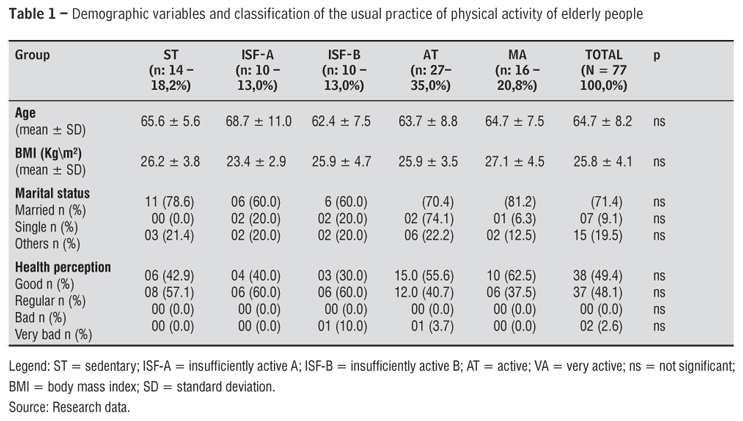INTRODUCTION: The systems responsible for maintenance of postural control naturally went into decline with advancing age, which may compromise the ability to maintain posture in the limits of stability, influencing the balance of body structures and consequent increase risks of fall. OBJECTIVE: To assess the impact of the practice of physical activity on stabilographic parameters, static and dynamic balance of elderly physically independent. MATERIALS AND METHODS: This is a cross-sectional and descriptive. The sample consisted of 77 women aged 60 to 75 years stratified into five groups according to physical activity classified by the international physical Activity Questionnaire (IPAQ). Force platform was used for evaluations stabilographic, tes, one foot (TAU) - static balance, and the timed up and go (TUG) - dynamic balance. RESULTS: Statistically significant differences were observed in all analyzed parameters except in the speed of oscillation in the "X" axis. The another hand, the results for functional tests showed no significant differences among the groups, but for the TUG it was verified a trend to good functional mobility with increasing practice of physical activity. CONCLUSIONS: The practice of physical activity is higher improvement in stability measure by stabilometry body, a fact not shown in neuromotor tests.
Aging; Postural balance; Motor activity; IPAQ



